Determination vs talent: could anyone be a pro cyclist if they 'tried hard enough'?
We seek to discover to just what extent our genetics are the determinant of our success
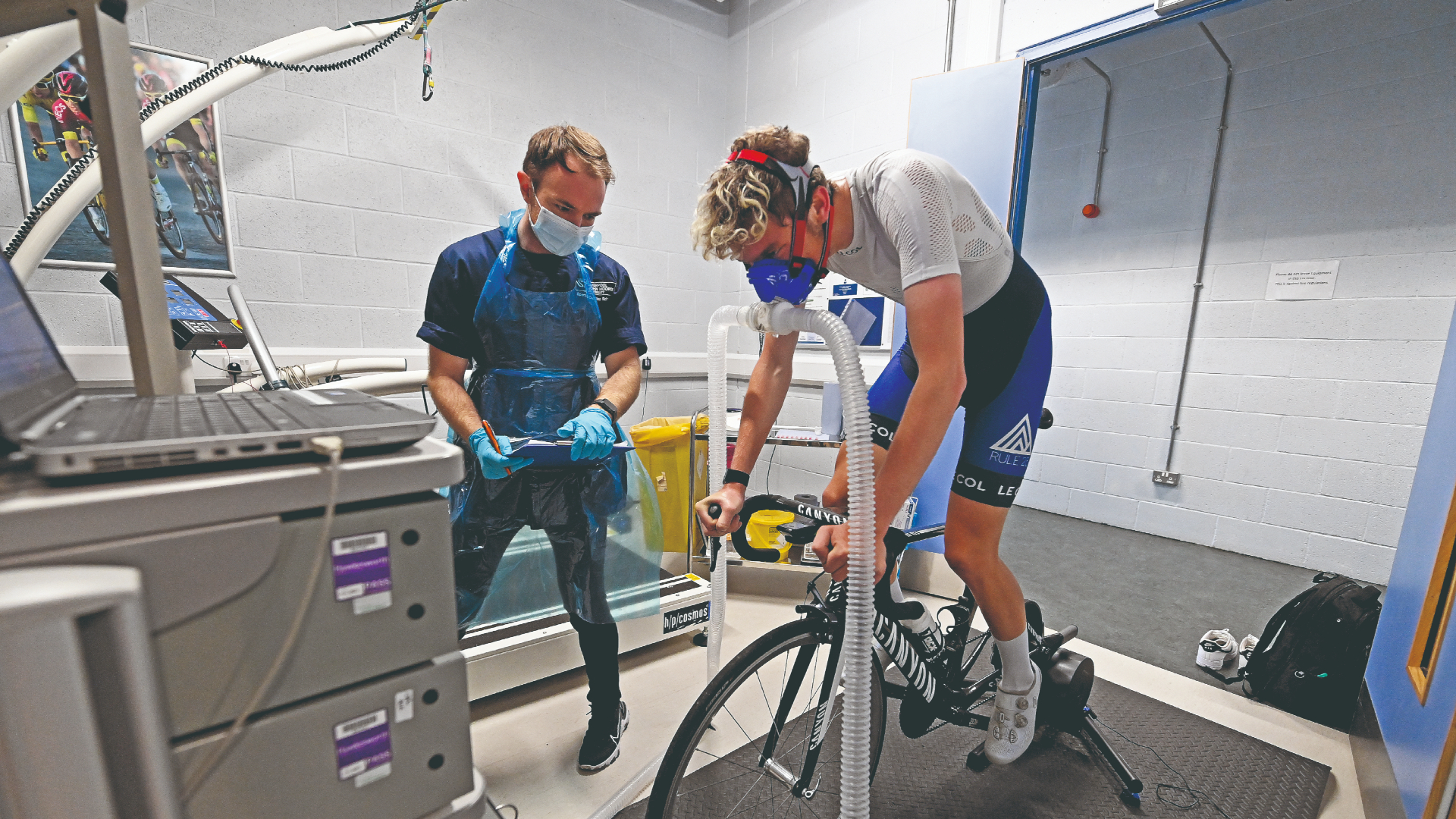
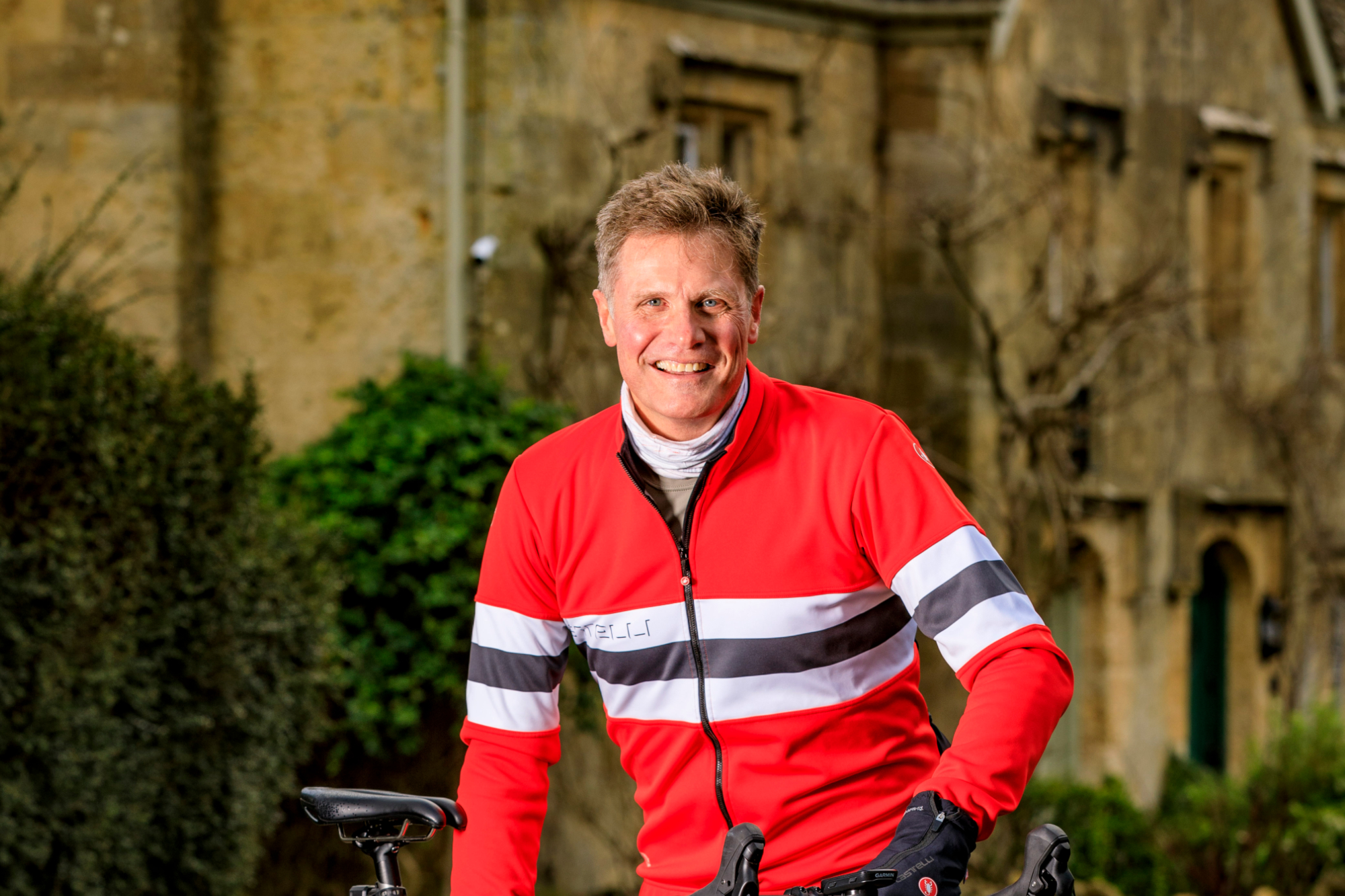
In December 2022, while training in Majorca, Tom Pidcock set a new Sa Calobra KOM of just 22:46. Ten months later, I took on the same challenge with a raggedy bunch of pals on our own less elite kind of training camp. Backs to a sparkling Med, we set off strongly, before very quickly realising we’d need to settle into a steady rhythm just to make it up the nine kilometres of 6.5% average gradient. Our time, I’m embarrassed to admit, was more than double Pidcock’s effort.
On the plus side, the long effort gave me a remarkable amount of time to ponder whether pro riders are on another level genetically or whether any rider, given the right blend of consistent, quality training over a long enough period, could significantly narrow the gap. What really sets me and my mates apart from the likes of Tom Pidcock?
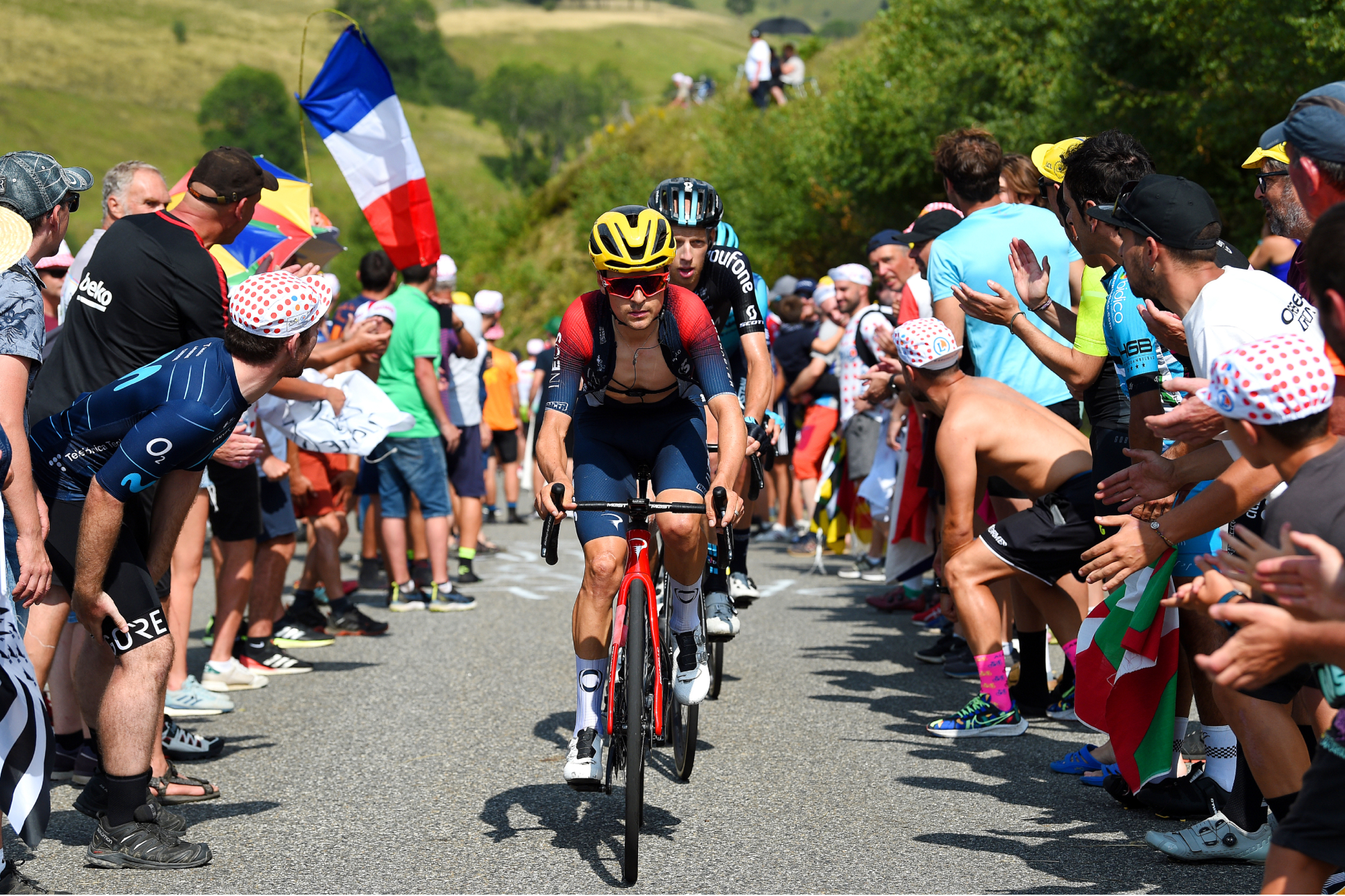
My sobering experience in Majorca reminded me of a research paper that CW’s fitness editor David Bradford had recently forwarded to me. In the study, an unnamed cyclist was put through 58 weeks of intensive, periodised training. The outcome? His VO2 max increased by an incredible 20% to a skyhigh 87ml/kg/min, giving him a whopping maximum aerobic power of 7.4W/kg – the kind of numbers that could challenge Pidcock up Sa Calobra. We all know that training works, but this was an enormous improvement over the course of just one year. What would happen to my own fitness, I wondered, if I managed to train like a demon for a solid 12 months?
The research was conducted in 2018 by Bent Rønnestad, a professor of exercise physiology at Inland Norway University of Applied Sciences. The cyclist subject of the study, who remains anonymous to this day, was tasked with completing 452 hours of low-intensity training (67%), 124 hours of medium intensity (18%) and 69 hours of high intensity (10%). He also had to do 34 hours of strength training (5%). That adds up to 679 hours of training, which sounds like a lot but actually averages out to a seemingly achievable 11.7 hours per week. Maybe I really could boost my own VO2 max by a massive chunk too. I decided to contact Prof Rønnestad to get his view on my prospects.
Nobody’s perfect
While waiting for a response for Rønnestad, I put in a call to Emma Trott, retired track star and British Cycling junior team endurance coach. Under her tenure, Britain has produced a string of exceptional young cyclists including Zoe Bäckstedt, Cat Ferguson, Izzy Sharp, Carys Lloyd and Millie Cousins. Trott’s job is to take young, relatively untrained athletes and turn them into cycling wunderkinds, a role that gives her a unique insight into the significance of both innate talent and training.
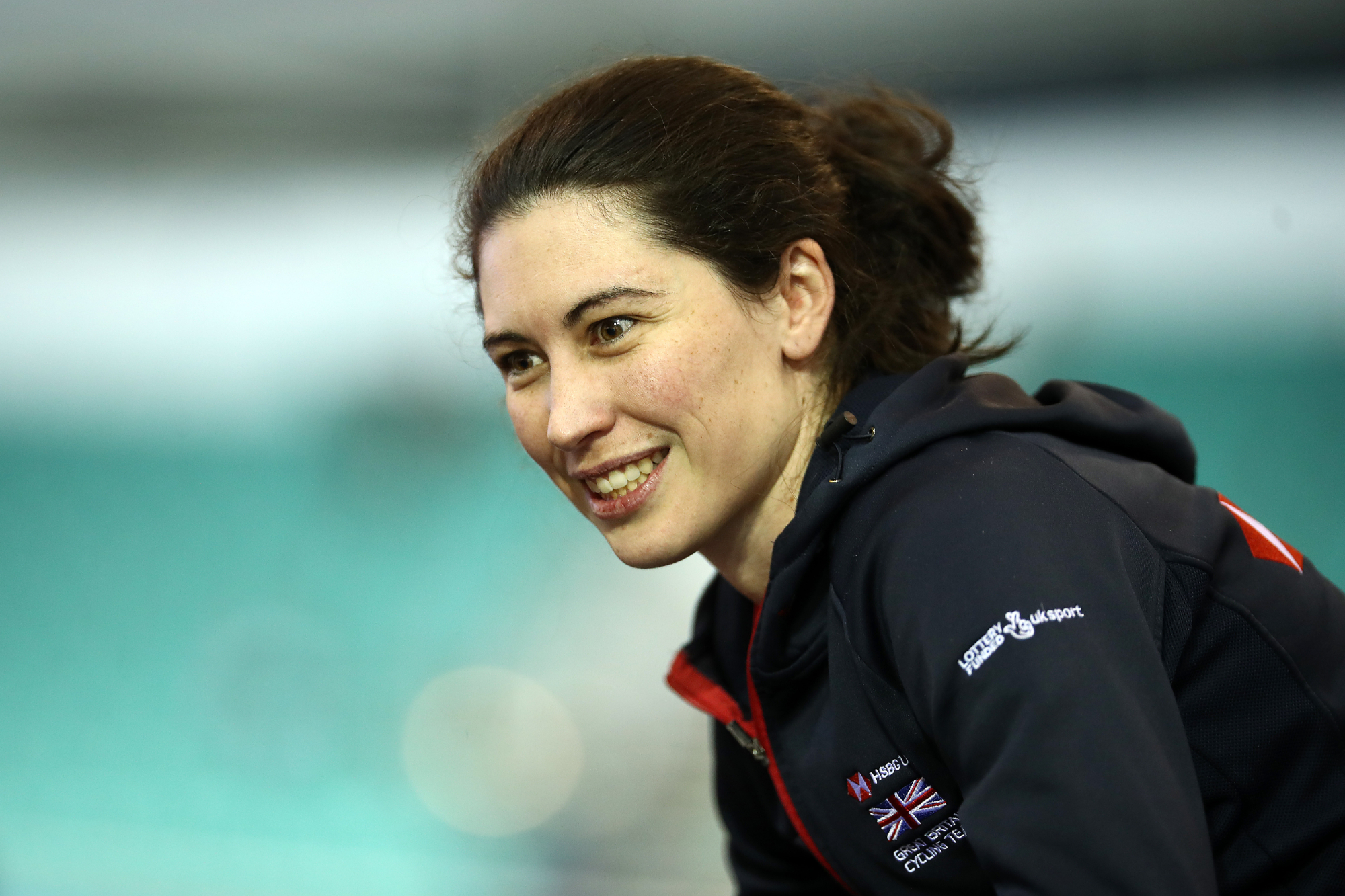
“It’s often easier to work with athletes who have less natural talent but a strong work ethic,” says Trott, before referring to her super-talented younger sister. “Laura [Kenny] won everything as a youngster – it seemed so easy. But it was Olympian Paul Manning who, on congratulating her for winning the junior Worlds, added, ‘Now the really hard work starts’. As you mature, you can’t just rock up to any bike race and expect to win on talent alone.” Manning’s point was that as you start competing at higher levels, it’s commitment to structured training that becomes the differentiating factor.
Trott also busts the myth of the talented all-rounder. “Nobody is perfect in every area, so riders need to play to their strengths and make their weaknesses less of a weakness. Physically, our girls are some of the best prepped riders in the world at junior level.” By the time a rider reaches national level, every competitor they face is equipped with natural talent. “When they join the pro ranks,” continues Trott, “everyone is physically strong, so they need to excel in other skills too, like thinking tactically. No one is 100% at everything. For example, some riders are natural descenders, while others may have the power numbers but need to be taught how to corner at speed.”
Get The Leadout Newsletter
The latest race content, interviews, features, reviews and expert buying guides, direct to your inbox!
I’m buoyed up on hearing this. The perfect athlete isn’t delivered straight from the womb but emerges gradually as a result of their long, committed effort. Yet, just as I’m thinking I’m in with a chance, Trott drops a bombshell. “Of course, innate talent is necessary,” she says, “and in many it’s obvious. Someone like Grace Lister [19-year-old double national champion] just looks at one with her bike, and it’s the same with Laura. The innately talented will have been winning consistently at U14 and U16 races too.
For a few, innate talent is a slower burn, but it’s there nonetheless.” Hmm, I think it’s time to talk with Prof Rønnestad.
Parent trap
"You need to choose your parents wisely to become an elite athlete,” jokes Rønnestad. “I am qualified in physiology rather than genetics, but I am convinced that some of us are lucky with our genes and have an extraordinary ability to achieve elite performance.” He knocks the wind out of my sails by explaining that the rider in his study was already a well-trained elite when he began the one-year-experiment. On the one hand, this makes it all the more remarkable that he experienced such a huge uplift in performance, but on the other, it suggests that it was his innate genetics that gave him such massive scope for improvement.
Before I get too carried away with this theory, Rønnestad reminds me that it was only a single study, with just one subject, whose physiology and cycling goals are probably very different to mine. In addition, the block periodisation technique that was used may have averaged just a dozen hours of training a week, but by the very nature of the programme, some weeks were much more intensive and tougher than others. The upshot is, I’m unlikely to be able to replicate the study even if I wanted to – I’m not fit enough to withstand the workload.
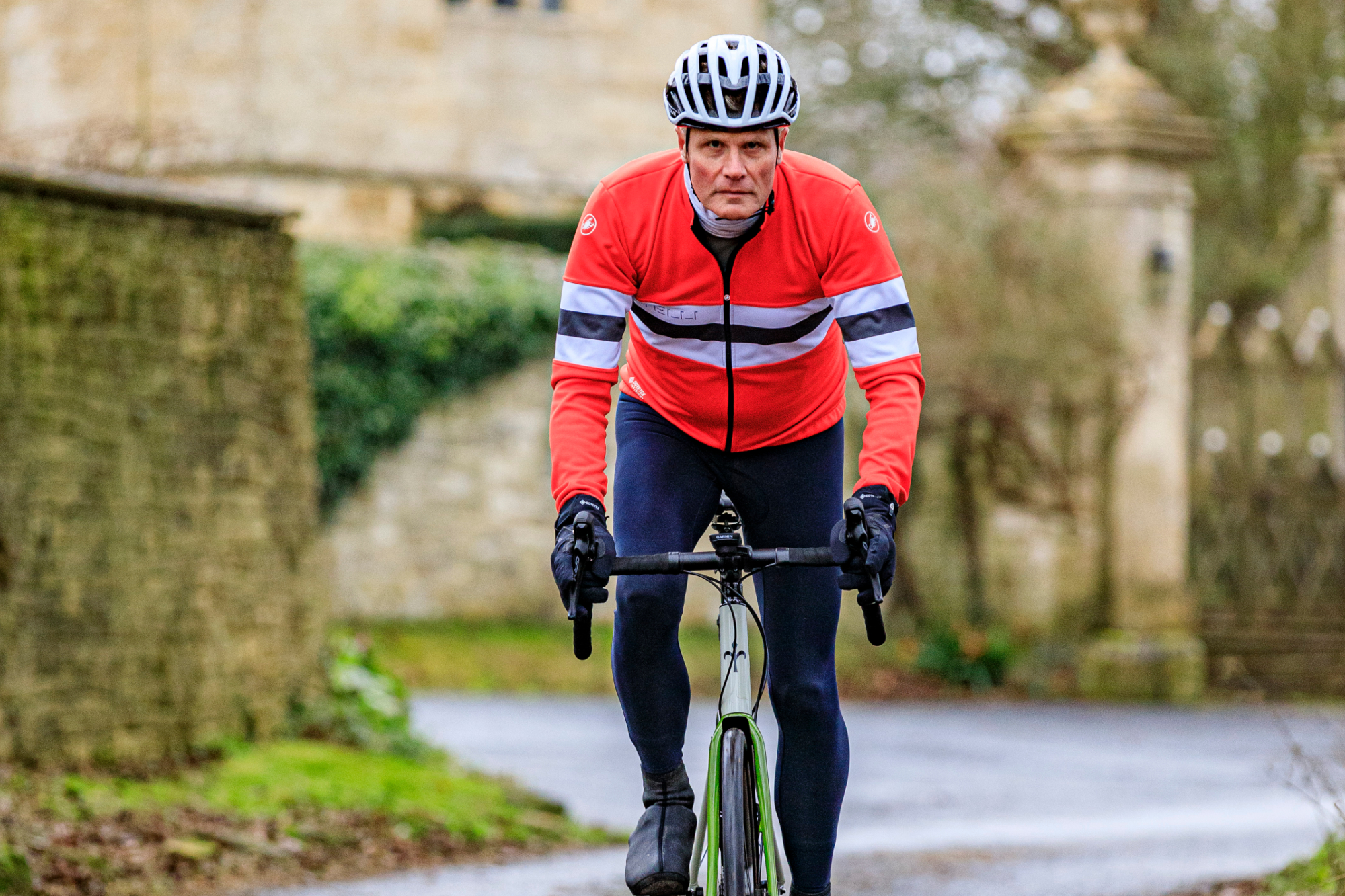
It dawns on me that I’ve made the gaffe of drawing an overly optimistic message from the study – one that it doesn’t really provide. Even so, surely Rønnestad can provide some kind of reassurance, a glimmer of hope? “Take comfort in the fact that, even if a rider has an extremely high VO2 max, it doesn’t necessarily mean they will perform well,” he obliges. “In the same way, a rider with a lower VO2 max can compensate for it with many other abilities – for example, a higher mental capacity or greater economy.”
This is more like it – I seem to have got Rønnestad warmed to my theme, so I go all-in and ask whether structured training over a long period can help a less innately talented rider like me to level-up. “Based on my experience of working with athletes, I don’t think so,” he says, cautiously. “You need to have certain dispositions, from the mental to the physiological. Not everyone is destined to be an Olympian. However, it does depend on the sport. If you are less talented but have the mentality to commit to a lot of training, then you could possibly become a second-tier football player or a third tier cyclist.”
Inheriting success
If my genetics are pegging my performance to third-tier at best, I want to better understand why, so I contact Alun Williams, professor of sport and exercise genomics at Manchester Metropolitan University’s Institute of Sport. “If you haven’t got an above average deal of the genetic cards, then all the work and dedication in the world will not make you the best in a highly competitive sport such as cycling,” says Williams. “In a minority sport, where there is a much smaller pyramid of competitors, inherited talent alone may be just enough to bring you success – or an average set of genes combined with a lot of dedication, training and nutrition might be sufficient. But in a highly competitive sport where you have athletes with lots of different genetic characteristics competing, all of them working hard, success will favour those with the most beneficial genetics who put in the highest quality work. To be truly successful in a competitive sport, you need both.”
Citing studies on members of the same family, including twins, Williams puts figures on the relative influence of inheritance. “Taking VO2 max as an example,” he says, “in a group of relatively untrained people, genetic factors account for 50% of the performance differences between them. The other 50% is down to the differences in their environment – training, diet, hormones in the womb, pollutants in the atmosphere and so on.”
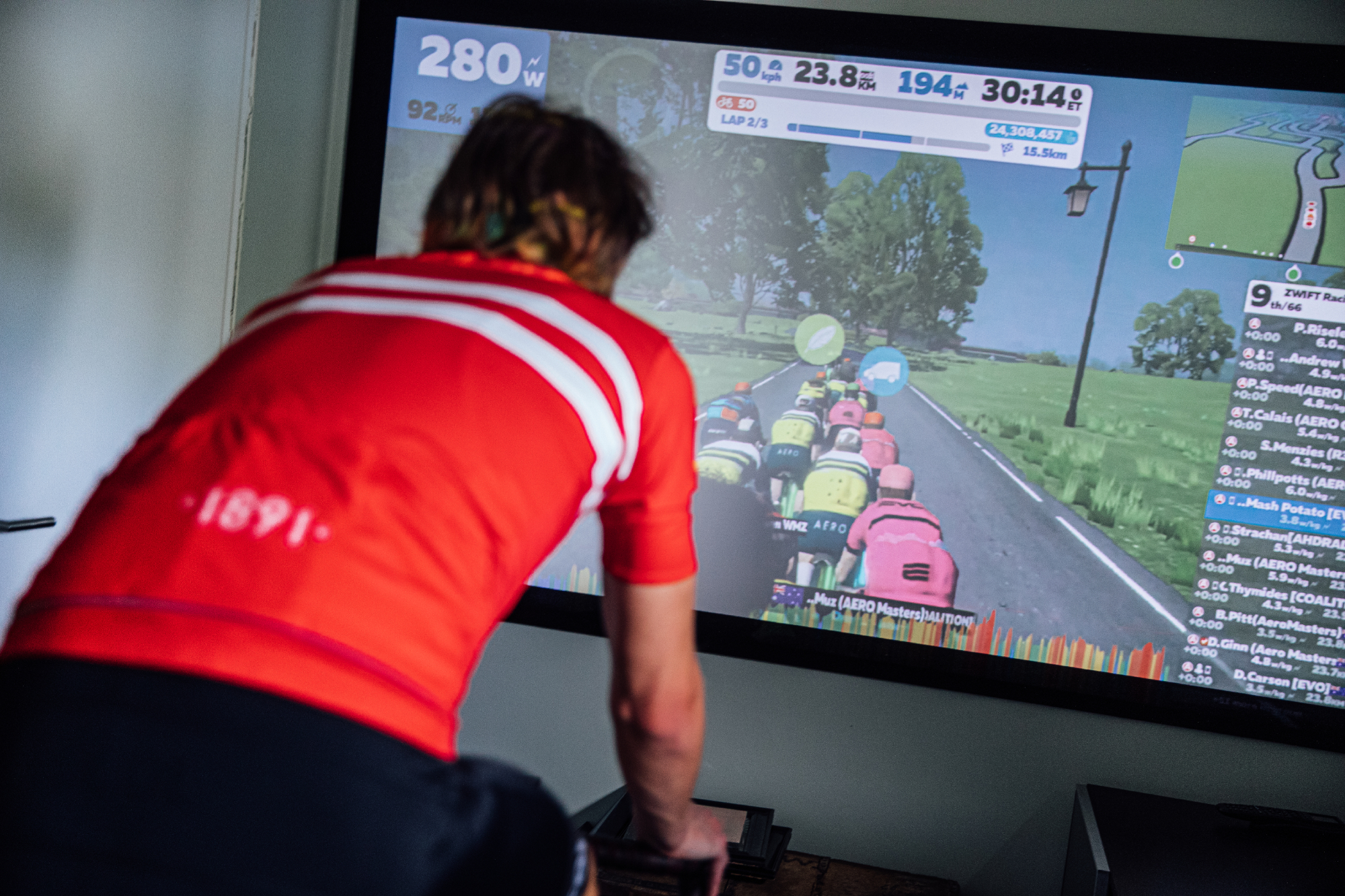
This 50/50 figure is a broad guide that can’t be extrapolated to particular traits in specific individuals. Most determinants of performance sit within the 30-80% range for their genetic component. Twitch fibre type – slow twitch or fast twitch muscles – comes in at 50%, muscle strength is 50-60%, mesomorphy (muscularity) is 60-70% and injury traits, such as tendon injuries, are approximately 40%. Height is at least 80% genetically determined – no surprise, then, that most of us are of similar stature to our parents. But when it comes to ascertaining the extent to which particular fitness characteristics in an individual are genetically determined, science runs out of answers – there are too many variables to make that call.
“You may be genetically blessed without even realizing it,” adds Williams. “There is no way of knowing what your genetic potential is until you do lots of sustained, intense training. You’ll find plenty of companies on the internet offering genetic testing – usually for ACE and ACTN3 genes, which may indicate power and endurance capabilities – but currently the results are ridiculously simplistic and not worth the money.” I’m beginning to appreciate that being physically blessed doesn’t count for much if you don’t possess the determination to train hard over a long period. Are mental qualities, such as stoicism and competitiveness, inherited too?
“I haven’t seen a research project on those characteristics,” admits Williams. “The closest things are studies on cognitive ability and skill acquisition. These come out quite highly genetically determined, around 70%. Skill acquisition requires brain plasticity, an ability to respond, improve and get trained. Can we expand that to competitiveness? That’s plausible, but I haven’t seen any data on it.”
By the end of my chat with Williams, I’ve learnt that I’m as likely to rob Tom Pidcock of his Sa Calobra Strava KOM as I am to rob King Charlie of his throne. I just don’t possess the right genetics – thanks, Mum and Dad! On a more positive note, I’ve been reminded that dipping in and out of training throughout the year for individual events is a poor strategy. If I really wanted to discover the full extent of my potential – and perhaps beat my mates up the big climbs – I would need to focus on consistent, individualised training for the long haul, year after year. Only by committing to a joined-up, long term plan can any of us begin to explore our genetic blessings, let alone find their limits. So though very few of us have the potential to challenge Pidcock, we might have vastly more room for improvement than we’ve ever dared imagine.
Top tips: how to max-out your potential
We asked each of our interviewed experts for their top tips on how to reach your full potential as a cyclist:
Andy Bruce: Ask yourself, what is it that’s driving you, what’s the pleasure that you get out of what you are doing? If you don’t understand the ‘why’, then why are you doing it? Improving your performance on the bike is not an easy thing to do and it’s much easier not to bother. But with a cycling goal in place, you can start to work out how you are going to achieve it.
Prof Bent Rønnestad: Be consistent. Keep it going week after week. Think ahead, pace it carefully. If you perform one week with very high training stimuli and the consequence is having to rest for the two following weeks, that’s not smart. For eager athletes, often the problem is not training too little, but recovering too little. If you reach a point where you are no longer improving, consider some changes to your training. Don’t just repeat your weekly schedule forever.
Prof Alun Williams: Trying something new may reveal your genetic strengths, so experiment with different types of training. Try different disciplines within cycling too. If you’re a sprinter, be happy with being a sprinter – don’t aspire to being a climber too.
Emma Trott: Return to the basics. I really believe in not over-complicating training. A decent winter is what sets the pattern and tone for everything that follows. Lots of consistent Zone 1 and Zone 2, coupled with two gym sessions a week, will take you far.
Zero to hero: ‘Getting my FTP to 364 watts took years of work’
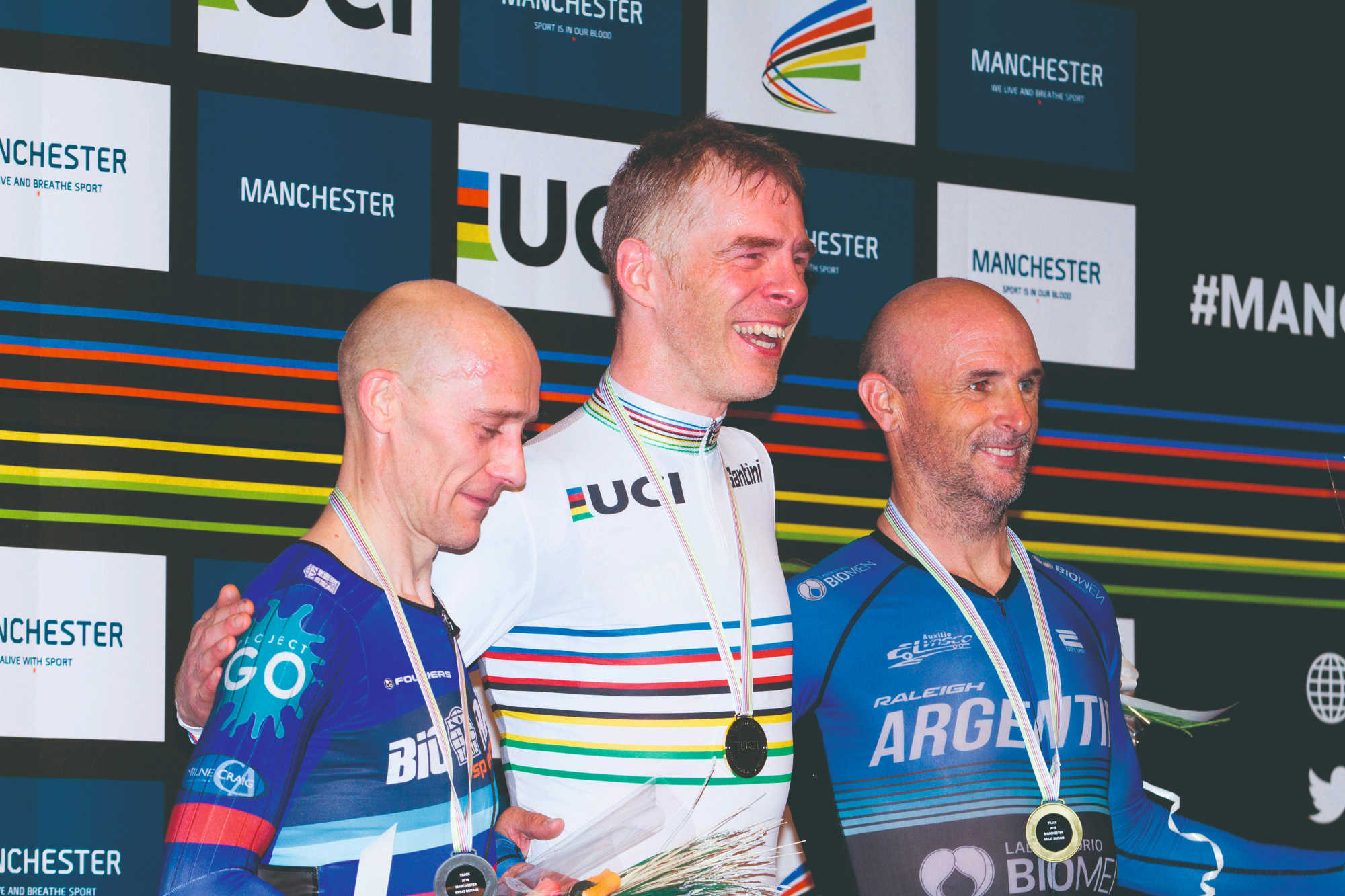
The British have a fondness for hapless amateurs who triumph against the odds. At first glance, Andy Bruce appears to fit this mould. His racing career began in 2011 as a sedentary 39-year-old on a basic cycle-to-work-scheme-funded Orbea. Chatting with him, his tales come thick and fast: the time he was placed just behind Cavendish in the 2022 Isle of Man Gran Fondo qualifier, despite having had to screw a crank back on at the roadside. Or the time when, having been dropped at the 2019 World Masters Points Race Championship, he prised victory from the jaws of defeat.
Yet, get to know him and it’s apparent that his multiple successes, including three Scottish Vets RR and two British Masters IP titles, are the product of rigorous, targeted training rather than the disordered forays of a 52-year-old amateur. “My FTP within a year or two of starting cycling was a rather poor 230 watts,” says Bruce. “After four years of training in a consistent but conventional manner, it rose to a respectable 330 watts. But it’s the influence of my coach, ex-pro Martin Lonie, that has enabled me to reach up to 364 watts in recent years.”
What I learn from Bruce is that Zone 2 plus high-intensity interval training is just the start. To reach your true potential, regardless of genetics, you’re going to need individualised training and specific goals. “If you don’t have goals, you have to question why you’re doing what you are doing,” says Bruce. “Why would I complete a 45-minute Tabata session if it wasn’t part of the lead up to a forthcoming IP event?” He squeezes in these sessions around his busy career in IT. “I dedicate between 10 and 15 hours a week to training,” he says. “My cycling training plan is broken down into four-week blocks, timed around major events. The first week tends to be endurance based, with some high intensity work in weeks two and three. The final week very much depends on the event.”
This full version of this article was published in the print edition of Cycling Weekly. Subscribe online and get the magazine delivered direct to your door every week.

Thank you for reading 20 articles this month* Join now for unlimited access
Enjoy your first month for just £1 / $1 / €1
*Read 5 free articles per month without a subscription

Join now for unlimited access
Try first month for just £1 / $1 / €1
Cycling Weekly's Tech Editor Simon spent his childhood living just a stone’s throw from the foot of Box Hill, so it’s no surprise he acquired a passion for cycling from an early age. He’s still drawn to hilly places, having cycled, climbed or skied his way across the Alps, Pyrenees, Andes, Atlas Mountains and the Watkins range in the Arctic.
Simon has 35 years of experience within the journalism and publishing industries, during which time he’s written on topics ranging from fashion to music and of course, cycling.
Based in the Cotswold hills, Simon is regularly out cycling the local roads and trails, riding a range of bikes from his home-built De Rosa SK Pininfarina to a Specialized Turbo Creo SL EVO. He’s also an advanced (RYT 500) yoga teacher, which further fuels his fascination for the relationship between performance and recovery. He still believes he could have been a contender if only chocolate wasn’t so moreish.
-
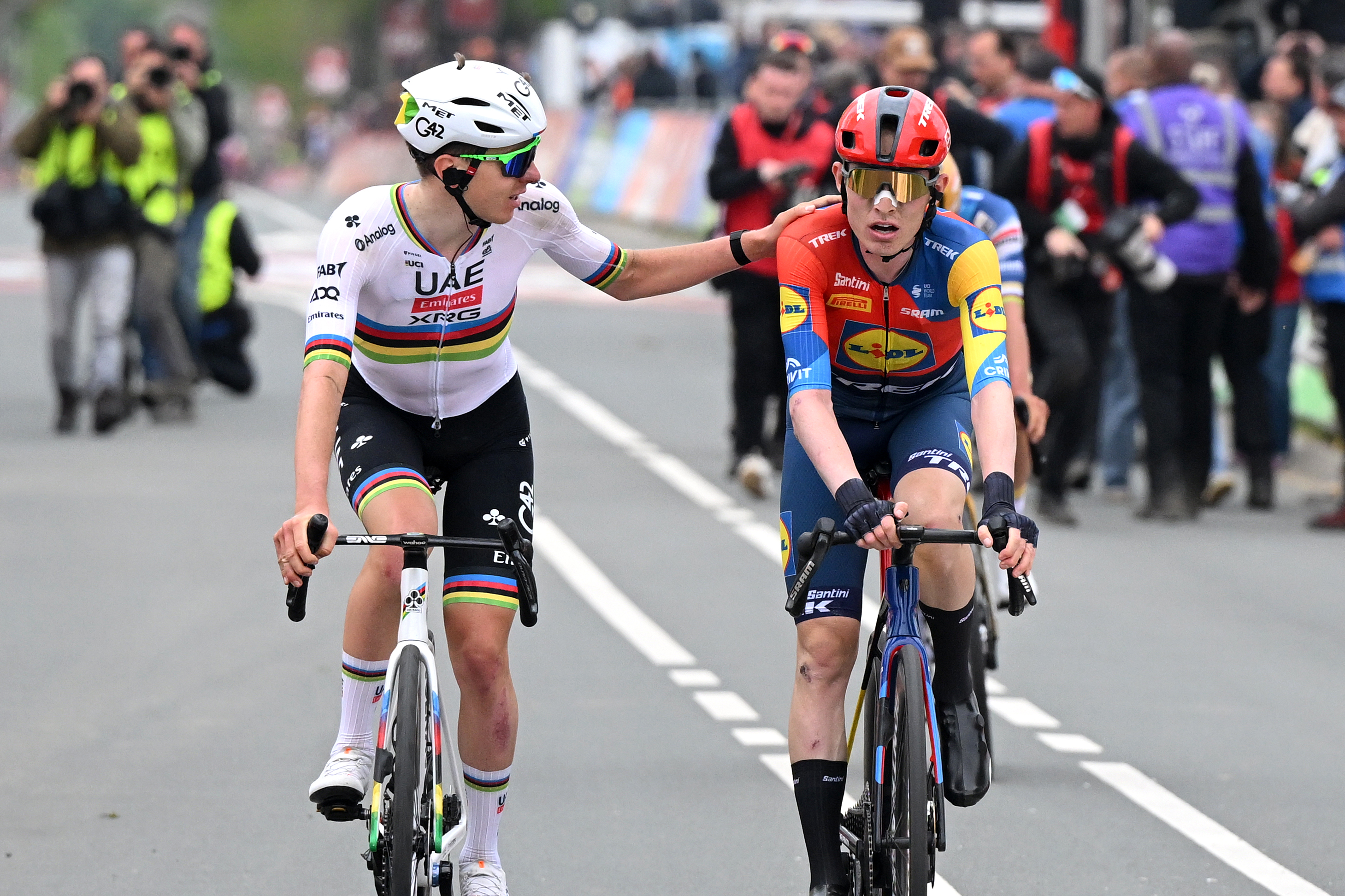 'The line was 5 metres too far' - Tadej Pogačar reacts to Amstel Gold Race second place
'The line was 5 metres too far' - Tadej Pogačar reacts to Amstel Gold Race second placeWorld champion reeled back and beaten in sprint by Lidl-Trek's Mattias Skjelmose
By Tom Davidson
-
 'I was riding for the podium' - Mattias Skjelmose pulls off shock Amstel Gold Race win after reeling back Tadej Pogačar attack
'I was riding for the podium' - Mattias Skjelmose pulls off shock Amstel Gold Race win after reeling back Tadej Pogačar attackDane worked with Remco Evenepoel to set up stunning three-way finale
By Tom Davidson